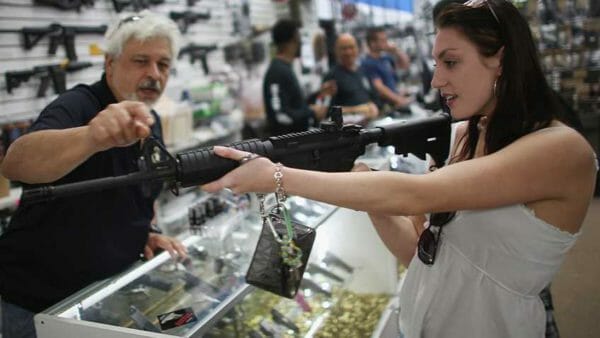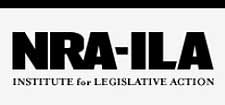
U.S.A. -(AmmoLand.com)- We all knew who the finger-pointers and tattletales were in junior high school. A disproportionate number of them, it seems, now populate America’s anti-gun lobby.
The oft-rebranded gun control organization currently calling itself Brady United Against Gun Violence (Brady) launched a website this week called The Gun Store Transparency Project.
This site is the result of the Freedom of Information Act (FOIA) litigation Brady engaged in against the Bureau of Alcohol, Tobacco, Firearms and Explosives (ATF) to obtain certain ATF reports from inspections of Federal Firearm Licensees. Brady is now making those reports available to the public.
These reports, however, are not a random or representative sampling of ATF’s inspection efforts but contain only those “in which the ATF issued an FFL a Warning Letter or more severe remedy … .”
In other words, the site completely ignores any inspection report — which in 2020 comprised over 60% of them — that did not result in findings of violations or sanctions.
Brady claims the purpose of the website is so “the American public will no longer be kept in the dark about businesses that contribute to gun violence in their communities, and whether federal authorities are failing to hold them accountable.”
But is every business cataloged on the site “contributing to gun violence in their communities” simply because it was found, in some fashion, to be in non-compliance with the reams of federal laws and regulations that apply to licensed gun sellers?
The answer, of course, is no.
There is no mystery to which sorts of violations will land an FFL in serious trouble with ATF. The agency publishes them on its own website:
In addition to a refusal to allow an IOI to conduct an inspection, each of the following violations, absent extraordinary circumstances, will also result in ATF issuing a notice of revocation:
-
- Transferring a firearm to a prohibited person
- Failing to conduct a required background check
- Falsifying records
- Failing to respond to a trace request
These are the sorts of violations that pose the most obvious risk of a firearm falling into dangerous hands or that could impede law enforcement authorities from conducting a legitimate regulatory or criminal investigation.
None of these, however, appear on the ATF’s list of the 10 “most frequently cited violations during ATF firearms inspections” in 2020.
Instead, these “violations” are mostly the types of bookkeeping errors that are likely to occur in any context in which transactions are subject to a highly bureaucratic process that involves multiple ledger entries, forms, requirements for the production and recording of identification, and database inquiries.
Examples of the most common “violations,” according to the ATF, include “[f]ailure to complete forms as prescribed” and missing signatures or dates.
Indeed, one of the reasons the National Instant Criminal Background Check System (NICS) itself doesn’t always work as intended is because the millions of mostly government forms and computer entries on which it relies are themselves commonly incomplete, ambiguous, or simply erroneous.
This is why the ATF inspection process is not always or even usually a harshly punitive endeavor. Rather, it can also serve to help these heavily regulated businesses identify areas of operation or processes that need to be improved. The process, for example, includes a post-inspection conference so the FFL has an opportunity to respond to the alleged violations, initiate corrective actions, ask questions, and review relevant federal firearms laws and regulations with the inspectors.
This is also why the NRA supported the landmark Firearms Owners Protection Act in 1986, which ensured that the ATF inspection process could not be abused by anti-gun administrations simply to reduce the number of FFLs by any means possible.
To some degree, the process is similar to a student’s report card, which can help with self-assessment and identify areas in need of improvement. But, just as academic report cards are not necessarily or usually about finding a pretext to kick the student out of school, ATF compliance inspections are not necessarily or usually aimed at shutting down the FFL.
There is no college degree specifically aimed at running a gun shop. FFLs are often small businesses that face the challenge not just of complying with federal law but the business, licensing, and zoning laws of states and localities as well. Some learning inevitably occurs on the job. It is hardly surprising that boxes sometimes get missed on forms, serial numbers get transposed, or someone forgets to make a copy of an identification document.
Fortunately, these scrivener-type mistakes rarely have any material impact on public safety. That ATF usually recognizes this is laudatory and does not mean the agency is lax in holding industry members accountable.
As much as Brady may hate the idea, commerce in firearms is a legitimate, constitutionally protected business in the United States. There is nothing inherently shady or suspect about it, and members of the firearms industry should not be portrayed as criminals or public menaces for every mistake that winds up on a bureaucratic report. The inspectors themselves, after all, have to justify the work that they do and would risk total irrelevance and constantly diminishing resources if their labor didn’t generate some sort of corrective action now and then.
Ironically, Brady’s effort mostly underscores that FFLs operate within a heavily regulated environment and still mostly manage to do so safely, accurately, and with high levels of compliance.
It is true, as Brady asserts, that the ATF does not have the resources to inspect every single FFL right up to the legal limit. But the big picture that emerges from the ATF’s own published data from inspections that do occur strongly indicates that would be a waste of time and resources, anyway.
About NRA-ILA:
Established in 1975, the Institute for Legislative Action (ILA) is the “lobbying” arm of the National Rifle Association of America. ILA is responsible for preserving the right of all law-abiding individuals in the legislative, political, and legal arenas, to purchase, possess, and use firearms for legitimate purposes as guaranteed by the Second Amendment to the U.S. Constitution. Visit: www.nra.org

from https://ift.tt/3HghAtf
via IFTTT

No comments:
Post a Comment